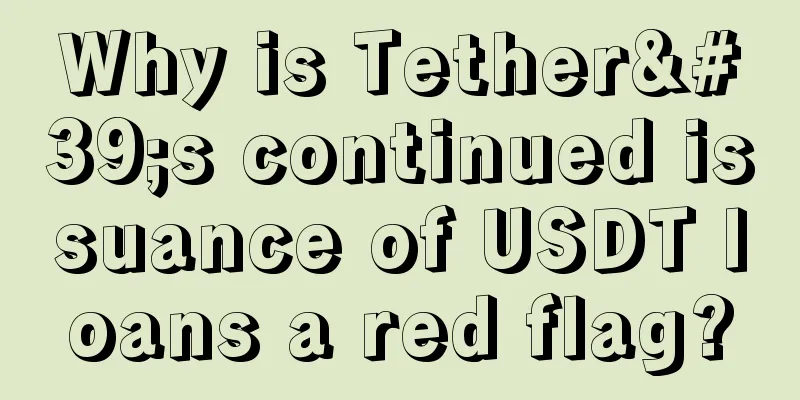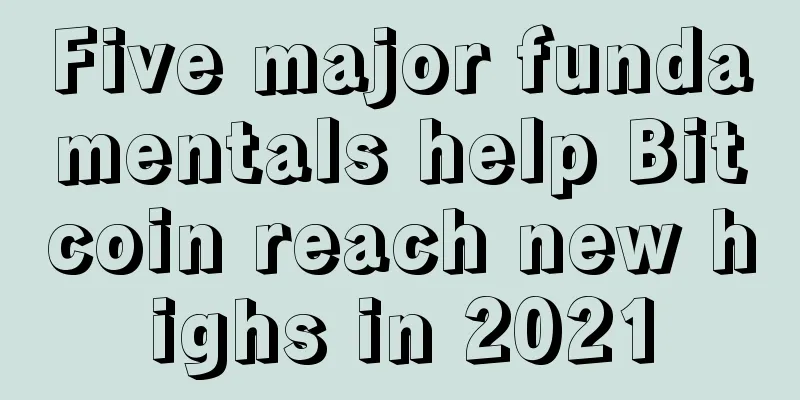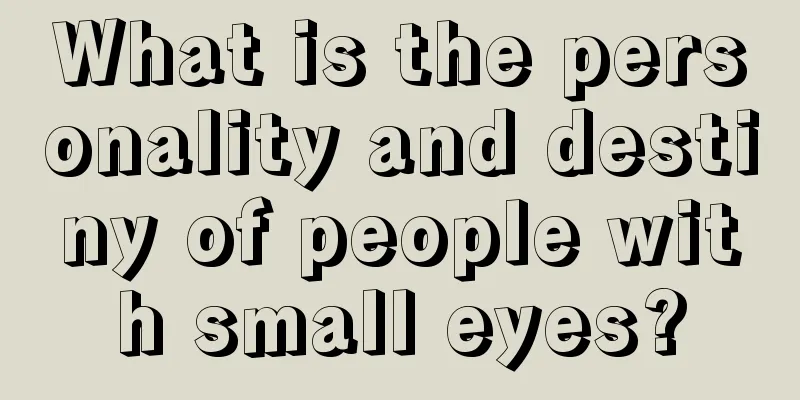Why is Tether's continued issuance of USDT loans a red flag?

Tether starts issuing USDT loansI know I say this a lot, but I just want to emphasize that Tether, the large stablecoin issuer, is in a fantastic business. It's an unregulated bank that pays no interest, interest rates are rising, and its depositor base is pretty stable. At the end of June, Tether reported assets of about $86.5 billion, mostly in U.S. Treasuries backing about 83.2 billion Tethers. That's up from the previous quarter: Tether had a brief run during last year's crypto winter, but it wasn't too severe and has recovered well; crypto investors still want to keep their money in Tether. Anyway, if you are the operator of Tether, you don't need to worry about the risk of a run . Tether is mainly invested in short-term safe assets, and these short-term safe assets pay very high interest now. Just invest Tether's funds in overnight loans secured by US Treasuries at the overnight financing rate, and you can earn a yield of about 5.3%, or about $4.6 billion per year, completely risk-free and almost no fees. If someone comes with Tether and asks to exchange it for US dollars, you can just give them US dollars; your investments are all short-term and liquid. It's a wonderful business. This means that if you are in charge of Tether, and someone comes to you proposing a smart investment that will give you a much higher return, even with only a tiny bit of risk , you should plug your ears, yell “no”, and kick them out of your office. You can make billions of dollars in pure profit without taking any risk! No credit risk (buying Treasuries), no term risk (buying very short term Treasuries), no liquidity risk (you can easily sell Treasuries if someone withdraws), no risk at all, and 5% interest. This kind of problem—what to do with money—would be an existential problem for a real bank! We talked about how Silicon Valley Bank needed to take investment risks in order to make enough money to run its business, so it put money into long-term Treasury bonds, thinking they were safe, but then there was a run on the bank and SVB collapsed. I felt bad for them; they had to take risks to make money. But Tether doesn’t! Not at all. It would be a little unreasonable for Tether to loan Apple Inc. $100. However, Tether’s publicly disclosed balance sheet isn’t exactly the safest thing you could imagine. In The Wall Street Journal, Jonathan Weil reports: Tether Holdings has resumed lending its own stablecoin to customers, less than a year after saying it would stop the practice.
The point I made above is that there is no financial reason for Tether to need these loans. All the people holding Tether could get very rich and live an easy life just by keeping all their money in the Treasury. A Tether spokesperson made the same point here: Tether doesn’t lend because it wants to, or because it thinks it’s a good financial decision for Tether. Tether lends to support its borrowers. Someone over there — maybe a crypto exchange or trading firm or something — has some collateral (perhaps a volatile crypto) and wants to borrow dollars (in the form of Tether), and Tether Holdings is the cheapest, most accessible lender they can find. Someone in the crypto space needs funds to buy (or continue to hold) their crypto, and Tether will provide the funds, secured by crypto, not because it’s a good deal for Tether, but because Tether is being a good citizen of the crypto ecosystem and supporting its counterparties. Tether’s borrowers are large crypto investors who want to get financing for their crypto collateral and who, if their liquidity runs out, will need to “sell their collateral at potentially unfavorable prices, resulting in losses.” If large crypto firms receive margin calls and have to sell their assets, that would drive the price of crypto down. Lending to them is not only good for them, but also for the entire crypto ecosystem : it prevents price drops caused by sell-offs. We’ve discussed Tether’s lending activity before. In recent years, a common form of conspiracy theory among cryptocurrency skeptics has gone something like this: “Tether is a self-sufficient reserve bank for cryptocurrencies that dynamically prints Tethers to maintain the price of cryptocurrencies. At the margin, cryptocurrencies are not purchased by real people putting new dollars into the crypto system, but by crypto hedge funds using newly printed Tethers.” (Editor’s note: From this perspective, large crypto hedge funds borrow Tethers and use these loans to buy various cryptocurrencies, thereby driving up the market value of the entire market. But in the process, no new money enters the market, so this is a self-inflating bubble.) Does the Tether spokesperson’s statement prove this to some extent? |
>>: How can Solana make a comeback?
Recommend
What does a mole on the back of a man's neck mean?
What does a mole on the neck mean? Most of the mo...
What should we really care about when Ethereum hard forks?
As the Ethereum PoS upgrade date approaches, more...
What is the fate of a woman with half eyebrows? Is it good for a woman to have only half eyebrows?
People's eyebrow shapes are different. Some p...
How to identify people: palmistry fingers teach you how to identify people
How to identify people: palmistry fingers teach y...
Physiognomy: Six Palaces and Physiognomy
What are the six palaces in physiognomy? The six ...
Several facial features of people who love to tear down others
Nowadays, some people have good personalities and...
Japan's first virtual currency girl idol group completed its debut: the scene was hot
With the popularity of virtual currencies represe...
Does having horizontal lines on the bridge of the nose mean a bad fate? Analysis of the influence of horizontal lines on the bridge of the nose on fate
People with horizontal lines on the root of the n...
Does a man with a flat nose mean he has a bad fate?
The five senses have a great influence on physiog...
Where does the destiny line begin?
There are many important lines on our hands, whic...
Blockchain will secure global derivatives trading
Rage Review : The Depository Trust and Clearing C...
Analyzing personality traits from facial features
It is said that appearance reflects the heart. In...
Coin Zone Trends: Bitcoin Price Trends Based on Big Data This Week (2016-11-25)
The medium-term direction is yet to be determined...
【Video】Antcoin A3 SC Miner Review
【Video】Antcoin A3 SC Miner Review If you cannot w...
How to explain the face of a woman with a bulbous nose? Is a woman with a bulbous nose lucky?
A woman with a bulbous nose brings good luck to h...









